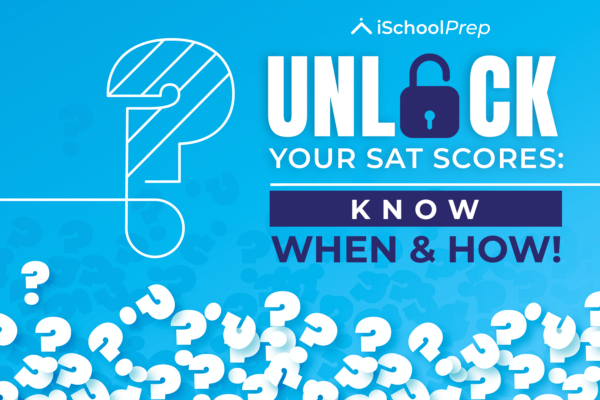Table of Contents
About the SAT score calculator
As the curricula are relatively comparable, the ACT to SAT score calculator and vice versa are used to calculate scores. A scale from 200 to 800 corresponds to the typical SAT score. SAT score affects your chances of getting into college and scholarships, but how is it determined? This blog will walk you through the process of calculating your final SAT score.
How are SAT scores calculated?
How do I calculate my SAT score is a common question candidates have. To do that, you must understand the entire SAT score calculator process.
The overall grade is determined by the reading, writing, and math grades. However, when the results are calculated, reading and writing are merged to form evidence-based reading and writing. There are separate grading guidelines for the Evidence-based section and the Math section.
These two parts are scored using only the following criteria-
- Each area has a raw score based on how many accurate answers were provided.
- Every question in every segment is given one mark.
- No negative marking
Calculating SAT raw scores
The SAT score calculator calculates only the right response. You will be awarded 1 raw point for each accurate response. The maximum number of attempted right answers determines the SAT’s raw point maximum.
There are 52 questions in the SAT Reading section; hence the top raw score is 52. The writing component of the SAT has 44 questions, and there are 58 questions in the math section, with a maximum raw score of 58. The maximum number of raw points that are written is 44.
Calculating the SAT scaled score from the raw score
The technique for converting SAT raw scores to scaled scores varies depending on the section-
- Math SAT score calculator are directly converted from their raw scores on a range of 200 to 800. This math conversion score counts toward the final SAT score.
- Calculate SAT reading score (evidence-based) by independently converting the obtained raw reading and writing scores on a scale of 10 to 40, adding the converted scores from the two sections, and multiplying the total by 10. This score is computed simultaneously with the SAT’s total score.
This SAT score chart, which displays the converted scores for each section depending on the raw results, is shown below-
| Raw Score | Scaled maths score | Reading score | Writing and language score |
| 0 | 200 | 10 | 10 |
| 1 | 200 | 10 | 10 |
| 2 | 210 | 10 | 10 |
| 3 | 230 | 11 | 10 |
| 4 | 240 | 12 | 11 |
| 5 | 260 | 13 | 12 |
| 6 | 280 | 14 | 13 |
| 7 | 290 | 15 | 13 |
| 8 | 310 | 15 | 14 |
Add the raw scores from the two sections, scale the result using the table, and get your math SAT score. For instance, a candidate received a raw score of 46 after providing 46 accurate answers. Math will have a scaled score of 670.
The applicants can also use this table to comprehend their scaled SAT reading, writing, and language scores.

How is your raw SAT subject score calculated?
The SAT subject test has a 200–800 scale, with 800 being the maximum possible score. The SAT subject score range shows that a candidate’s performance is not assessed simply on a single exam day. Therefore, the SAT subject score fluctuates between 30 to 40 points above or below the initial score.
Details of the evaluation
When a person’s answer sheet is being assessed-
- They will receive a round score based on the number of successfully answered questions.
- For each incorrectly attempted answer, the authorities will deduct a portion of the final score from the raw score.
- Following the calculation of the approximate total, the board transforms the score using the conversion scale for the subject.
The number of possible answers to a question determines how many points are deducted for choosing the incorrect response-
- -1/4 point for each wrong five-choice question
- -0.3 points for each unanswered four-choice question
- 12 points for each three-choice question that is incorrect
Most SAT subject test questions are five-choice; therefore, there is typically only a quarter-point penalty for guessing.
The closest full point is used to round subject test raw scores. In other words, fractions of a point and higher round up, whereas fractions of a point and lower round down. The result is that a 33.25 would round down to 33, whereas a 33.5 would round up to 34.
Key takeaways
- You can choose an appropriate SAT strategy once you’ve calculated your target SAT score in terms of the raw score.
- Since there is no penalty for guessing, calculating your SAT score calculator should be simple.
- When the results are calculated, reading and writing are merged to form evidence-based reading and writing.
Like this blog? Also read- SAT exam dates.
FAQs
Question 1: How can I determine my SAT score?
Answer: A number between 400 and 1600 represents your overall score. The combined score is the result of adding the results from the two sections, Evidence-Based Reading and Writing, and Math. The range of possible scores for these two sections is 200–800.
Question 2: What is a decent SAT score?
Answer: 1300 to 1500 points (Math: 650 to 750, Reading/Writing: 650 to 750) is a good result.
Question 3: How many questions can be missed if a score of 1200 is needed on the SAT?
Answer 3: You can skip or choose the wrong answer to an average of 9 writing questions and 12 reading questions in Evidence-Based Reading and Writing. Between the calculator and no-calculator sections of Math, you can skip/answer 17 problems on average incorrectly.






